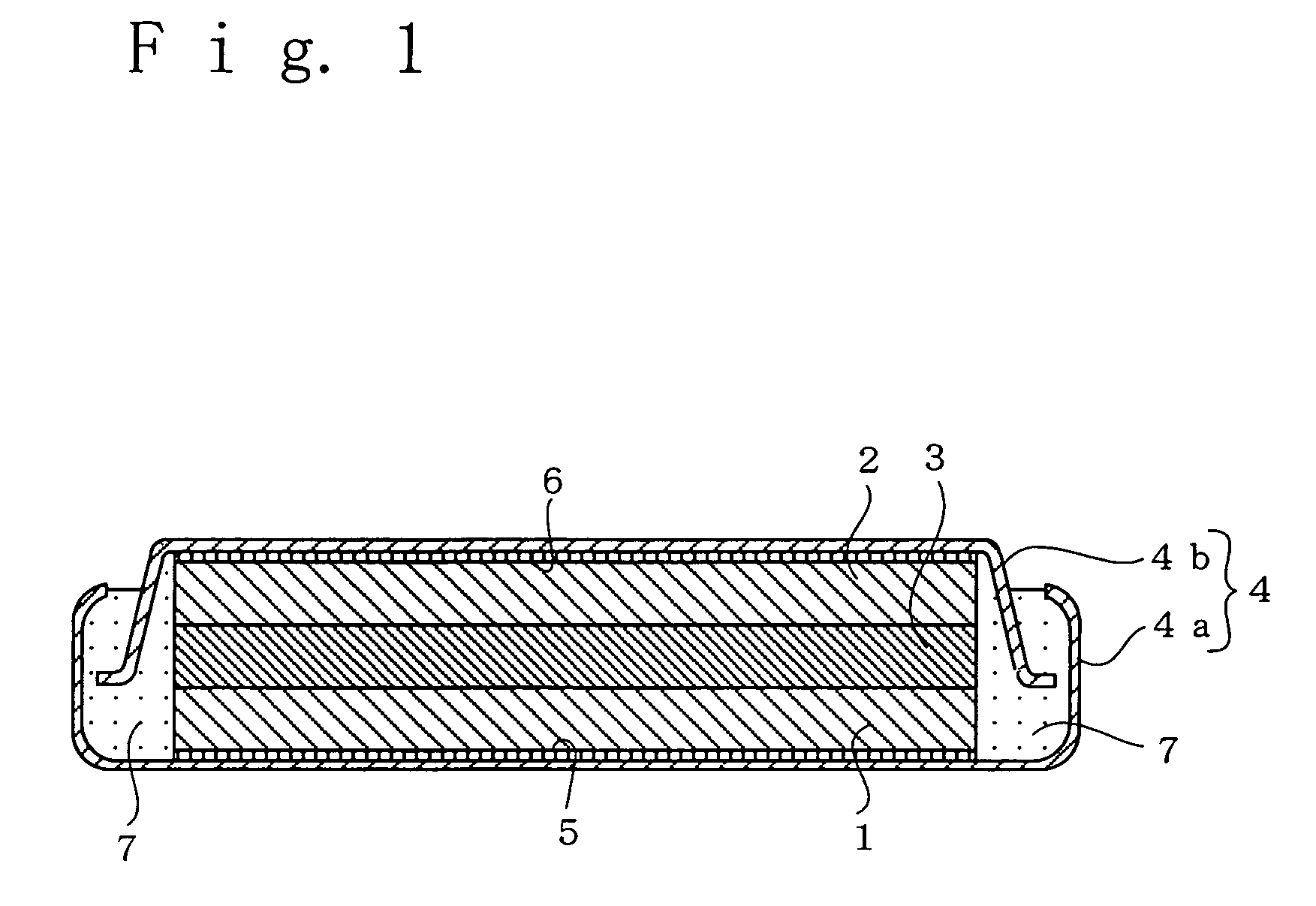Non-aqueous electrolyte secondary battery
a secondary battery and electrolyte technology, applied in secondary cell servicing/maintenance, cell components, nickel compounds, etc., can solve problems such as battery performance degradation, achieve the effects of improving formability, increasing the charge-discharge characteristics of the negative electrode, and increasing the flowability of the negative electrode mixtur
- Summary
- Abstract
- Description
- Claims
- Application Information
AI Technical Summary
Benefits of technology
Problems solved by technology
Method used
Image
Examples
example a1
[0033] In Example A1, a flat, coin-shaped non-aqueous electrolyte secondary battery as illustrated in FIG. 1 was fabricated using a positive electrode, a negative electrode, and a non-aqueous electrolyte that were prepared in the following manner.
Preparation of Positive Electrode
[0034] A positive electrode was prepared as follows. LiCoO2 was used as the positive electrode active material. 85 parts by mass of that LiCoO2 powder was mixed together with 5 parts by mass of acetylene black and 5 parts by mass of artificial graphite having a specific surface area of 300 m2 / g as conductive agents, as well as 5 parts by mass of powder of poly(vinylidene fluoride) as a binder agent, to prepare a positive electrode mixture. Then, the positive electrode mixture was press formed to prepare a positive electrode in a pellet form of diameter 4 mm, thickness 0.75 mm, and mass 30 mg. The amount of LiCoO2 in this positive electrode was 25.5 mg.
Preparation of Negative Electrode
[0035] A negative ...
example a2
[0039] In Example A2, a non-aqueous electrolyte secondary battery of Example A2 was fabricated in the same manner as Example A1 except that the type of conductive agent was changed from that of the negative electrode of Example A1.
[0040] The conductive agent of the negative electrode used in Example A2 was graphitized vapor grown carbon fiber with a specific surface area of 15.3 m2 / g, C0=6.80 Å, La=900 Å, and Lc=200 Å.
examples b1 to b3
[0055] In Examples B1 to B3, non-aqueous electrolyte secondary batteries of Examples B1 to B3 were fabricated in the same manner as in Example A1 except that different types of positive electrode active materials from that used in Example A1 were used for the positive electrodes.
[0056] The positive electrode active materials used here were as follows; Example B1 used LiNi1 / 3Mn1 / 3Co1 / 3O2, Example B2 used LiNi1 / 4Mn1 / 4Co1 / 2O2, and Example B3 used LiNi1 / 6Mn1 / 6Co2 / 3O2. In each of the non-aqueous electrolyte secondary batteries of Examples B1 to B3 as well, the amounts of the positive electrode active material and the negative electrode active material were adjusted so that the positive electrode potential resulted in about 4.2 V versus lithium metal and the negative electrode potential resulted in about 1.2 V versus lithium metal, when setting the end-of-charge voltage at 3.0 V.
[0057] With the non-aqueous electrolyte secondary batteries of Examples B1 to B3 thus fabricated as well, the...
PUM
 Login to View More
Login to View More Abstract
Description
Claims
Application Information
 Login to View More
Login to View More - R&D
- Intellectual Property
- Life Sciences
- Materials
- Tech Scout
- Unparalleled Data Quality
- Higher Quality Content
- 60% Fewer Hallucinations
Browse by: Latest US Patents, China's latest patents, Technical Efficacy Thesaurus, Application Domain, Technology Topic, Popular Technical Reports.
© 2025 PatSnap. All rights reserved.Legal|Privacy policy|Modern Slavery Act Transparency Statement|Sitemap|About US| Contact US: help@patsnap.com

